EXERCISE #2
DATE: Wednesday 18th October, 2023.
What are Environmental Systems?
Environmental Systems are complex interactions between abiotic (non-living) and biotic (living)
components within several ecological spheres of the natural environment. The
geosphere (internal rock), lithosphere (crust), pedosphere (soil), biosphere/ecosphere
(biotic and abiotic flora and fauna), hydrosphere (water), atmosphere (air) and
cryosphere (ice) are the main Environmental Systems. They regulate the
distribution, growth, availability, etc. of natural resources and climate
conditions on Earth (The Geography of Transport Systems, n.d).
The Nitrogen, Phosphorous, Water, Sulphur and Carbon cycles also influence these environmental spheres, shaping landscape formation and
guiding compound and chemical element flows. These interlinked systems encompass boundaries where the movement, capturing, storage and utilization of energy or matter can be transferred and transformed (Bojana 2019). 
Image 1: The different ecological spheres which make-up the Environmental Systems on Earth.
Source: Schneider, n.d (sciencephoto.com).
What is Environmental Change?
Environmental Change refers to
disturbances in the biophysical and biogeochemical environment. Changes in the environment have been occurring for millions of years, however, the industrial revolution has amplified the dimension, velocity and extent of changes in Environmental Systems (Case Study, n.d). Notwithstanding, the natural ecological processes and anthropogenic actions over extended periods have also led to Environmental Change.
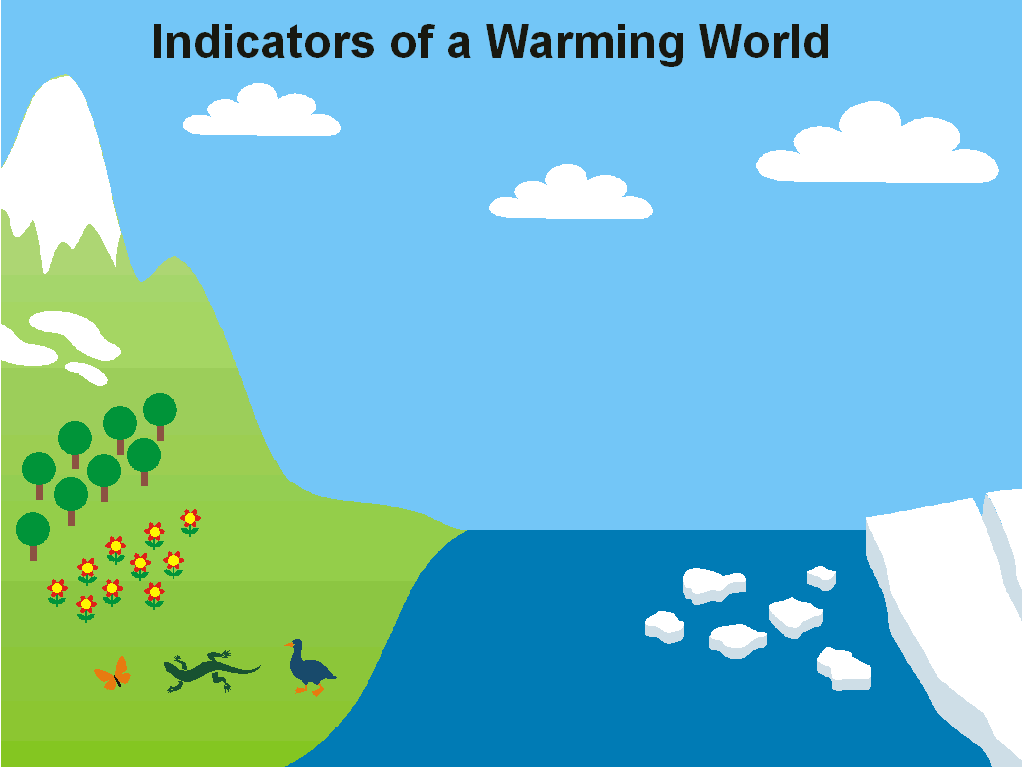
Image 2: Depiction of different Environmental Changes occurring in Environmental Systems, specifically related to increased temperatures.
Source: Skeptical Science, n.d. (skepticalscience.com).
What causes Environmental
Change?
From biological interactions, varying human activities, natural processes, climatic parameters, edaphic and biotic elements, several factors cause Environmental Change (N.A.S.A. 2023). Below lists some of the causes of
Environmental Change.
HUMAN
ACTIVITIES
v Pollution (water, land and
air), Agriculture, Overfishing, Overhunting, Urbanization, Deforestation, Overpopulation, Overconsumption, Mining, Tourism, Waste production, Genetic modification, Land reclamation,
Freshwater extraction, Fossil fuel burning, Agricultural intensification
and Fishery overexploitation (Leemans et al. 2009).
NATURAL
PHENOMENA (internal and external variations)
v Continental drift, Ocean
currents, Vegetation growth, Volcanic eruptions, Mountain formation,
Thermohaline circulation, Solar radiation fluctuations, Orbital changes, Ozone layer depletion, Atmospheric CO2 variation and Trapping of heat by greenhouse gases and aerosols (Nwankwoala 2015, 226).
CLIMATIC
FACTORS
v Rainfall, Light wind,
Temperature and Natural disasters.
EDAPHIC
FACTORS
v Soil pH, Soil texture and Soil
structure.
BIOTIC
FACTORS
v Parasites, Predators, Invasive species, Pests and Diseases and Soil micro-organisms.
How do Environmental Systems influence different rates of Environmental Change?
The influence of Environmental Systems on rates of Environmental Change relate to how human activity and natural processes directly and indirectly interact to encourage GHG emissions, climate
change, ecosystem vulnerability, etc. (Environment Agency 2023). Below details how the operation of Environmental Systems and its ecological cycles have guided different rates of Environmental Change.
The Geosphere
The geosphere embodies the solid interior and surface layers of earth, composed of rocks, the upper mantle, crust and lower mantle, which are deformable and hot. This sphere affects oceans and interacts with the atmosphere, biosphere, hydrosphere, cryosphere and the biogeochemical cycles (Aspen Global Change Institute, n.d.). Its influence on tectonic plate movement, volcanic eruptions, fossil fuel formation and combustion and the chemical and physical weathering and erosion of rocks shows that the geosphere works in tandem with other ecological spheres to encourage natural Environmental Change.
The Lithosphere
The lithosphere is comprised of surface landforms, soils, minerals and the outermost layers of Earth. Confined by the atmosphere, this sphere is divided into continental and oceanic plates (Reudhreghs 2016). Movement by its tectonic plates influence the geologic processes of mountain formation, erosion and more. These events impact biodiversity, atmospheric circulation, precipitation patterns and volcanic eruptions, further affecting air quality, landscape shape and location, climate zones, wind patterns, ocean currents and carbon storage in fossil fuels, rocks and sediments. Thus, alterations of the lithosphere impact the stability and functioning of the environment and its infrastructure.
Diagram 1: Depiction of the Lithosphere. Source: Dodd, 2021 (worldatlas.com).
The Pedosphere
The pedosphere is made up of soils and is subject to change during soil formation and erosion. It connects the atmosphere, lithosphere, biosphere and hydrosphere and is primarily involved in soil and rock development (Targulian et al. 2019). Important to micro-organisms, food production, heavy metal and excess nutrient buffering and aiding in groundwater filtration, the pedosphere influences the biogeochemical fluxes of other spheres. However, erosion, fertilizer application, deforestation, habitat loss and phosphate mining on the pedosphere affects biodiversity, increases food insecurity and impacts ecological health, changing the environment (Earth How 2023). Diagram 2: Illustration of the Pedosphere's interaction with other ecological spheres.
The Biosphere
Considered as a large ecosystem where water, soil and air circulate, the biosphere encompasses living flora and fauna which interact with the abiotic environment to provide energy and nutrients to sustain life. This sphere consists of the hydrosphere, atmosphere and lithosphere. However, the influence of human and natural forces on atmospheric gas composition, biome characterization and the shaping of wildlife, vegetation and climates makes this dynamic, yet complex system prone to Environmental Change (Beyond Weather and The Water Cycle, n.d.).
Image 4: The Biosphere and its connection to the Atmosphere, Lithosphere and Hydrosphere. Source: Dodd, 2021 (worldatlas.com).
The Hydrosphere
The total quantity of water, be it on the surface, air or ground on Earth, makes up the hydrosphere. The collection, falling, storage and return of water in the hydrosphere is performed through the water cycle. This water may be in the form of ice, liquid or vapor, derived from lakes, glaciers, oceans, clouds, ice caps, rivers, etc. (National Geographic Society, n.d.). Nonetheless, the relationship between the hydrosphere and other ecological spheres causes environmental and climate changes. For instance, pollution of the water cycle, the quantity, distribution and quality of water and the greenhouse effect where water vapor increases global temperature warming due to evaporation are changes caused to the hydrosphere, which ultimately impact the environment. Image 5: Depiction of the Hydrosphere and its processes. Source: Study.com n.d. (study.com).
The Atmosphere
The atmosphere consists of gas layers, made up of approximately 78% nitrogen, 21% oxygen, 0.9% argan and 0.1% of other gases which envelope the earth (National Geographic Society 2022). Subdivided into 5 layers, being the Troposphere, Stratosphere, Mesosphere, Thermosphere and Exosphere, the atmosphere regulates climatic temperature, provides air to breathe, influences different weather conditions and protects life from harmful ultraviolet (UV) rays. However, the bond of this sphere with biological, chemical, geographic and geological Earth components influences climate change, global warming, the greenhouse effect and depleted oxygen levels.
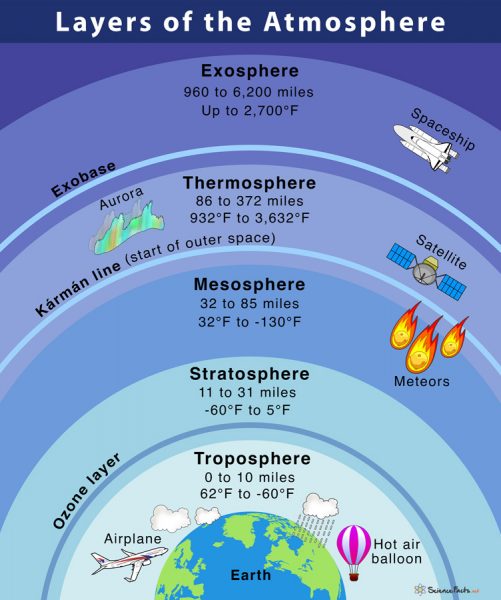
Diagram 3: Display of layers in the Atmosphere. Source: Team
Leverage Edu 2022 (leverageedu.com).
The Cryosphere
Solid, frozen water, in the form of glaciers, ice, snow, permafrost, icebergs, ice shelves, etc. makes up the cryosphere. This sphere influences ocean and atmospheric moisture and energy balances while providing water to humans, plants and animals. However, its sensitivity to increased GHG emissions and global warming cause ice melt (S.E.R.C. 2022). This impacts ecosystems, but also precipitation and temperature levels. This is seen in changes in the albedo effect as global warming accelerates melting ice, causing more sunlight to be absorbed than reflected, reducing freshwater, altered ocean density and salinity, sea level rise and changes the distribution and survival of micro and macro-organisms.
Diagram 4: Presentation of different processes in the Cryosphere (left) and reduced sea ice in the Arctic Sea caused by increased temperature (right).
The Water Cycle
The water cycle regulates climate change rates. By controlling the global distribution of moisture and heat, along with feedback between precipitation, GHGs and clouds, the quality, quantity and availability of water for ecological and human needs are affected when precipitation patterns are altered due to climate change and global warming (Honeycutt et al. 2015).
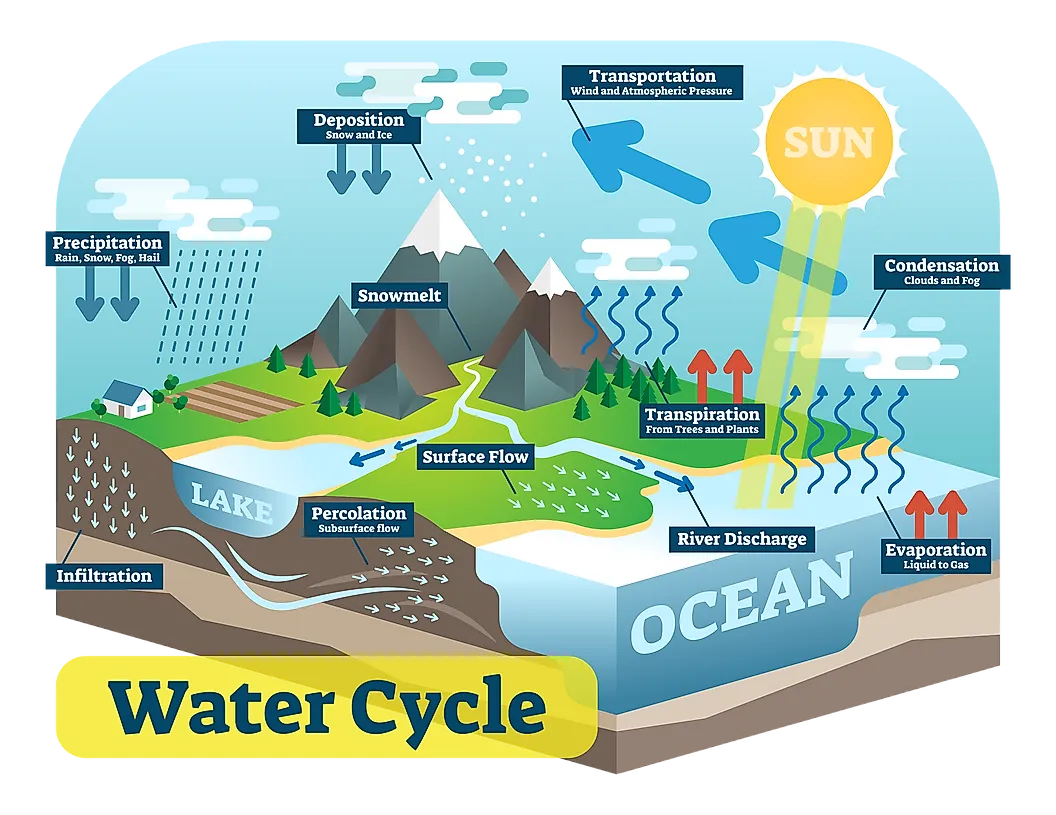
Diagram 5: Illustration of the Water Cycle. Source: Dodd, 2021 (worldatlas.com).
The Nitrogen Cycle
The biosphere is mainly impacted by excess addition of nitrogen. Nitrogen is a natural plant fertilizer, edaphically available through leguminous plants. However, humans have increased its presence in soils since the 1950’s due to heighted use of synthetic fertilizers in agriculture. GHGs also increase as the rate of organic matter decomposition in soils have risen nine-fold from 1890 to 1990, returning nitrogen to the atmosphere. This increase in nitrogen amplifies anoxia content, harming marine ecosystems (Europe Environment Agency 2020).
The Phosphorous Cycle
Essential to terrestrial ecosystems, the phosphorous cycle affects the hydrosphere, pedosphere and lithosphere. However, its insolubility and non-volatile characteristics vaguely affect the atmosphere. Anthropogenic use of phosphorous fertilizers has also increased its quantity in agricultural soils. The application of phosphorus fertilizers changes the phosphorous cycle and other dynamic cycles as a rise in phosphorus amounts can raise nitrogen in soils. The rate of phosphorous accumulated in agricultural soils have tripled between 1960 and 1990 (Understanding Global Change, n.d.).
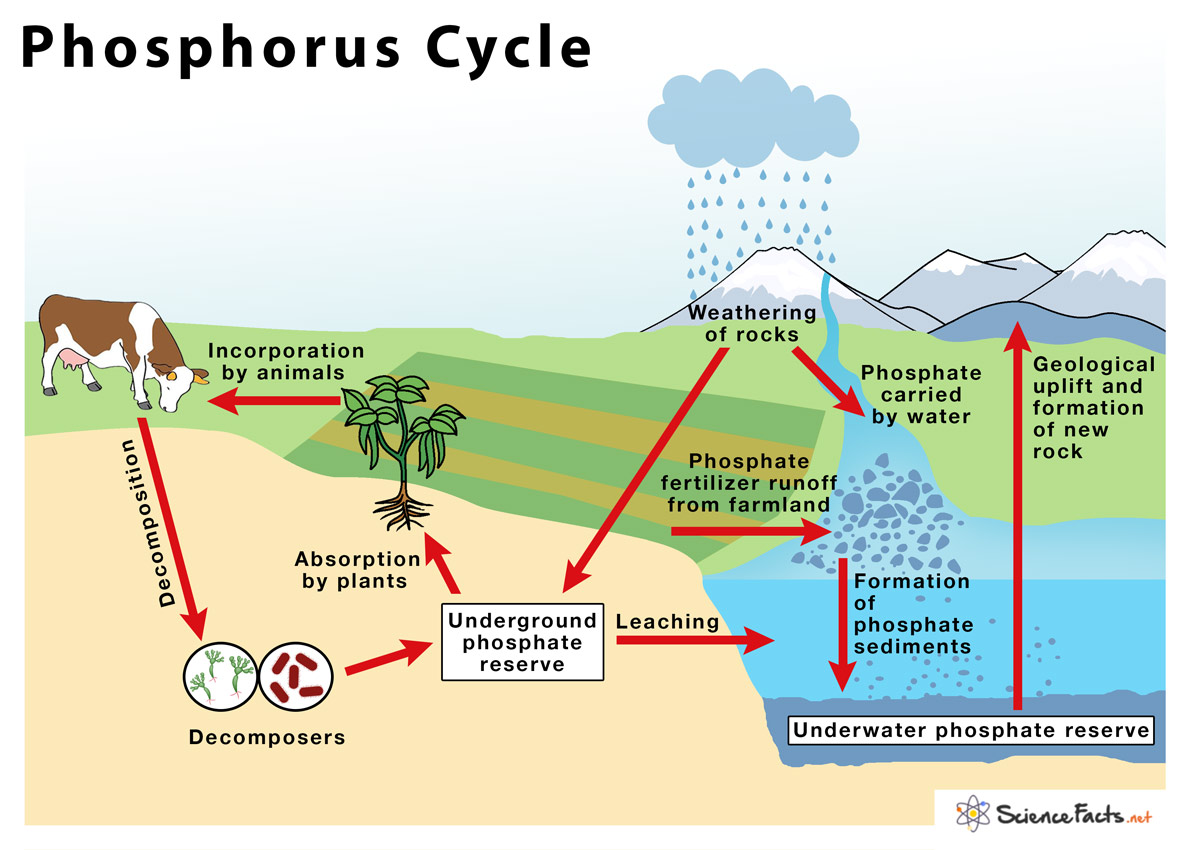
Diagram 7: The Phosphorous Cycle. Source: Science Facts 2020 (sciencefacts.net).
The Carbon Cycle
High levels of CO2 atmospherically absorb heat from solar radiation. Since CO2 has increased 1/3rd since the last 2 and a half centuries, this heightens evaporation when temperatures rise, thereby impacting the hydrosphere. The water cycle's regulation in atmospheric CO2 levels depends on the number of sources and sinks available to produce and trap carbon dioxide. Oceans, mangroves and forests are crucial carbon sinks, while fossil fuel burning is the main source of carbon dioxide emission. Disturbances to these carbon sinks and increased release from carbon sources therefore affects ecosystem flora and fauna, impacting all ecological spheres and their processes (Europe Environment Agency 2020).
Diagram 8: The Carbon Cycle. Source: Amruta 2023 (prepp.in).
The Sulphur Cycle
Being an essential nutrient for simple organisms (algae, bacteria and fungi), plants and animals, sulphur maintains ecosystems. Its marine availability as the element sulfate influences energy fluxes in aquatic ecosystems and the carbon cycle. Sulphur also promotes cloud formation when it dissolves in the ocean, forming dimethylsulphide, then oxidizing to sulphur dioxide and particulate sulphate (Europe Environment Agency 2020). However, atmospheric increases in sulphur are due to chemical weathering, as hydrogen sulfide oxidizes quickly. Thus, acid rain forms, impacting the geosphere and biosphere by acidifying and killing sensitive organisms and plants. 
Diagram 9: The Sulphur Cycle. Source: Amruta 2023 (prepp.in).
The operation of Environmental Systems with respect to the rate of Environmental Changes (Example: The Buccoo Reef, Tobago).
Changes in the environment, primarily onset by human actions, have caused differences in the functioning of global Environmental Systems. The Caribbean region, made up of Small Island Developing States (SIDS), is highly vulnerable to Environmental Change. Evidence of how such changes have affected Environmental Systems can be seen in coral reefs as corals are highly sensitive to coral bleaching and ocean acidification, driven by climate change and global warming.
The Buccoo Reef, situated off the coast of Tobago in the Caribbean Sea, is a habitat to numerous marine fauna and flora, but is crucial to the cultural and economic industry of Trinidad and Tobago and its local communities. Its shallow areas are extremely vulnerable to coral bleaching, where 50% of its corals have been lost in over 50 years (I.M.A. 2023). Having experienced bleaching for over two decades, there has been minimal
recovery of these hard and soft cover corals. Below presents how the Buccoo Reef operates given the rate of different Environmental Changes.
Pollution
- Humans influence high levels of marine pollution, affecting coral reefs. Chemical, nutrient and sediment runoff from sewage, plastic, agricultural
products and livestock waste causes eutrophication. As such, algal growth increases, reducing ocean oxygen levels and depleting water quality and coral reef health.
- Oil spills, pesticides and
industrial waste also release harmful chemicals into coral reefs. In the Buccoo Reef, large quantities of heavy metals have been found, namely zinc, lead, copper
and mercury. Inclusively, sediments accumulated from construction and erosion
events reduce light penetration and smothers corals.
- Also, air
pollution caused by increased fossil fuel burning for energy production amplifies atmospheric carbon dioxide. This in turn affects the
hydrosphere as carbon dioxide absorbed during condensation falls into oceans during precipitation. Oceans therefore dissolve the carbon dioxide, causing
ocean acidification. As such, the pH levels of the ocean begin to acidify, threatening the growth of coral calcium carbonate
skeletons which are composed of aragonite (N.S.F. 2018). This is because the skeletal density of the corals, which utilize carbonate ions
to construct their skeletons, decrease.

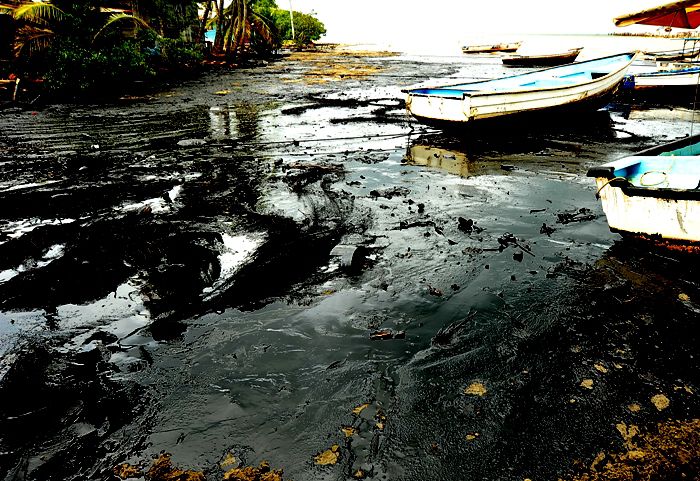
Image 6: Photos showing plastic pollution and oil spills in Trinidad and Tobago oceans. Sources: I.M.A. 2022 (ima.gov.tt); Bonn 2013 (trinidadexpress.com).
Climate change
- Being the main type of global Environmental Change, climate change affects coral reefs. Due to increased carbon dioxide emissions which trap atmospheric heat, global warming occurs (I.U.C.N. 2021). This affects the atmosphere and hydrosphere, warming ocean waters and causing ocean acidification, resulting in coral death, disease and bleaching.
- Since 1998, the Buccoo Reef has been experiencing extreme bleaching because of climate change, causing losses to biodiversity as coral cover decreases. As high temperatures cause stress to the corals, they expel their
symbiotic algae, which provides nutrients to produce strong and colourful
corals. If global
temperatures continue to rise, the Buccoo Reef would become more vulnerable and experience
more intense and frequent bleaching (Baksh et al. 2017).

Image 7: Bleaching of corals at the Buccoo Reef, Tobago due to climate change.
Source: Ganase n.d. (planning.gov.tt).
Overfishing
Reduction in the diversity
and abundance of herbivorous fish, which maintain coral reef health
and control excessive algae growth, due to overfishing disrupts the
resilience and ecological balance of coral reefs. The diversity of fishes in the Buccoo Reef is extremely low in comparison to other
reefs in the Caribbean region since overfishing, along with habitat degradation caused by the nets and boat anchors breaking the corals, affects the marine fauna living in and around the reef. Hence, decreased fish populations impact entire marine ecosystems the services they provide
to coastal communities, for instance buffering strong waves which cause coastal erosion (James et al. 2018).

Diagram 10: Portrayal of the threats of overfishing to coral reefs. Source: N.O.A.A. 2023 (oceanservice.noaa.gov).
CONCLUSION
In summation, the intricate relationship
between the operation of Environmental Systems with the rate of Environmental Changes has affected many ecosystems, as shown in the Buccoo Reef, Tobago. As presented, natural, but mainly anthropogenic actions have aggravated GHG emissions, particularly carbon dioxide, causing climate change and
global warming. This stresses coral reefs, threatening their growth and
survival. Given the extreme impacts of these changes to corals and by extension
the ecological spheres aforementioned, measures aimed at preserving and
conserving these and other Environmental Systems need to be developed and adopted to ensure their availability and functioning in the future.
Another topic completed.
Stay tuned for more!
Gif images courtesy GIPHY: https://giphy.com/.
REFERENCES
- Aspen Global Change Institute. n.d. “The Geosphere.” Accessed
October 14, 2023. https://www.agci.org/earth-systems/geosphere.
- Amruta, Patil. 2023. “Nutrient Cycling - Environment
Notes.” Accessed October 12, 2023. https://prepp.in/news/e-492-nutrient-cycling-environment-notes.
- Beyond Weather and The Water Cycle. n.d. “The
Biosphere/Climate Connection.” Accessed October 13, 2023. https://beyondweather.ehe.osu.edu/issue/we-depend-on-earths-climate/the-biosphereclimate-connection.
- Bonn, Donstan. 2013. “Images of The Oil Spill Disaster.”
Accessed October 17, 2023. https://trinidadexpress.com/news/local/images-of-the-oil-spill-disaster/article_e26eeeb7-df9a-527b-9b55-b80d27776e62.html.
- Baksh, S., James C., Khan A., and Mohammed E. 2017.
Coral bleaching on a high latitude Caribbean reef: Implications for future
climate change scenarios in Trinidad & Tobago. Marine Pollution Bulletin
118 (1-2): 396-405.
- Babić, Branko R. 2018. “Earthquakes in Serbia.” Accessed
October 15, 2023. https://www.britic.co.uk/2018/08/19/earthquakes-in-serbia/.
- Bojana. 2019. “How Is an Environmental System Defined?”
Accessed October 12, 2023. https://www.esstutor.net/environmental-systems-and-societies/how-is-an-environmental-system-defined/.
- Case Study. n.d. “Define Environmental Change.” Accessed
October 14, 2023. https://acasestudy.com/define-environmental-change/.
- Cardellach,
Estel, Greg Flato, Heinrich Fragner, Carolina Gabarro, Christine Gommenginger,
Christian Haas, Sean Healy, et al. 2018. “GNSS Transpolar Earth Reflectometry
exploriNg System (G-TERN): Mission Concept.” IEEE Access 6:
13980–18. https://doi.org/10.1109/ACCESS.2018.2814072.
- Dodd, Carly. 2021. “The Four Spheres of The Earth.” Accessed
October 15, 2023. https://www.worldatlas.com/geography/the-four-spheres-of-the-earth.html.
- Europe Environment Agency. 2020. “2. Environmental
changes and human development.” Accessed October 12, 2023. https://www.eea.europa.eu/publications/92-826-5409-5/page002new.html.
- Earth How. 2023. “The Pedosphere: Soil on Earth.” Accessed
October 18, 2023. https://earthhow.com/pedosphere/.
- Environment Agency. 2023. “State of the environment:
health, people and the environment.” Accessed October 13, 2023. https://www.gov.uk/government/publications/state-of-the-environment/state-of-the-environment-health-people-and-the-environment.
- Ganase, Anjani. n.d. “Coral bleaching and Tobago: The
Past, Present and Future.” Accessed October 14, 2023. https://www.planning.gov.tt/content/coral-bleaching-and-tobago-past-present-and-future.
- Honeycutt,
Sally, Jennifer Leeman, William J. McCarthy, Roshan Bastani, Lori
Carter-Edwards, Heather Clark, Whitney Garney, et al. 2015. “Evaluating Policy,
Systems, and Environmental Change Interventions: Lessons Learned from CDC's Prevention
Research Centers.” Preventing Chronic Disease 12: E174. https://doi.org/10.5888/pcd12.150281.
- International Union for Conservation of Nature and
Natural Resources (I.U.C.N.). 2021. “Coral reefs and climate change.” Accessed October
13, 2023. https://www.iucn.org/resources/issues-brief/coral-reefs-and-climate-change.
- Institute of Marine Affairs (I.M.A.). 2022. “Coastal
Issues.” Accessed October 12, 2023. https://www.ima.gov.tt/2022/10/10/coastal-issues/.
- Institute of Marine Affairs (I.M.A.). 2023. “Coral
Bleaching Alert for Tobago.” Accessed October 14, 2023. https://www.ima.gov.tt/2023/10/13/coral-bleaching-alert-for-tobago/.
- James, C., Almany G., Alvarez-Romero J., Bode M.,
Cumming G., Dobbs K., Emslie M., Evans R., Johns K., Morgan T., and Russ G.,
2018. Reef fishes at all trophic levels respond positively to effective marine
protected areas. PLoS ONE 13 (10): e0207368.
- Lal, Rattan, John M. Kimble, Ronald F. Follett, and Bobby
A. Stewart. 1997. Soil Processes and the Carbon Cycle. United States of America:
CRC Press. https://books.google.tt/books?id=1hrGaZvSHDIC&printsec=frontcover#v=onepage&q&f=false.
- Leemans, Rik, Ghassem Asrar, Antonio Busalacchi, Josep
Canadell, John Ingram, Anne Larigauderie, Harold Mooney, et al. 2009.
“Developing a Common Strategy for Integrative Global Environmental Change
Research and Outreach: The Earth System Science Partnership (ESSP).” Current
Opinion in Environmental Sustainability 1 (1): 4–13. https://doi.org/10.1016/j.cosust.2009.07.013.
- National Geographic Society. n.d. “Hydrosphere.” Accessed
October 17, 2023. https://education.nationalgeographic.org/resource/hydrosphere/.
- Nwankwoala, H. N. L. 2015. “Causes of Climate and
Environmental Changes: The need for Environmental-Friendly Education Policy in
Nigeria.” Journal of Education and Practice 6 (30): 224-234. https://files.eric.ed.gov/fulltext/EJ1081366.pdf.
- National Science Foundation (N.S.F.). 2018. “Scientists
pinpoint how ocean acidification weakens coral skeletons.” Accessed October 11,
2023. https://new.nsf.gov/news/scientists-pinpoint-how-ocean-acidification.
- National Geographic Society. 2022. “Atmosphere.” Accessed
October 15, 2023. https://education.nationalgeographic.org/resource/atmosphere/.
- National Ocean Service-National Oceanic and Atmospheric
Administration (N.O.A.A.). 2023. “How does overfishing threaten coral reefs?” Accessed
October 15, 2023. https://oceanservice.noaa.gov/facts/coral-overfishing.html.
- National Aeronautics and Space Administration
(N.A.S.A). 2023. “What is Climate Change?” Accessed October 14, 2023. https://climate.nasa.gov/.
- Reudhreghs. 2016. “How do the atmosphere and the
lithosphere interact?” accessed October 17, 2023. https://socratic.org/questions/how-do-the-atmosphere-and-the-lithosphere-interact.
- Schneider, Karsten. n.d. “Earth's climate system,
illustration.” Accessed October 13, 2023. https://www.sciencephoto.com/media/1290877/view.
- Skeptical Science. n.d. “Animated GIF of Climate
Change Indicators.” Accessed October 18, 2023. https://skepticalscience.com/warming_indicators.php.
- Study.com. n.d. “What is the Hydrosphere? - Definition
& Examples.” Accessed October 14, 2023. https://study.com/academy/lesson/what-is-the-hydrosphere-definition-examples-quiz.html.
- Science Facts. 2020. “Nitrogen Cycle.” accessed October
15, 2023. https://www.sciencefacts.net/nitrogen-cycle.html.
- Science Facts. 2020. “Phosphorus Cycle.” accessed October
13, 2023. https://www.sciencefacts.net/phosphorus-cycle.html.
- Science Education Resource Center at Carleton College
(S.E.R.C.). 2022. “Climate and the Cryosphere: Unit Overview.” Accessed October
13, 2023. https://serc.carleton.edu/eslabs/cryosphere/index.html.
- The Geography of Transport Systems. n.d. “The
Environmental System.” Accessed October 13, 2023. https://transportgeography.org/contents/chapter4/transportation-and-environment/environmental-system/.
- Targulian, Victor O., Richard W. Arnold, Bradley A.
Miller, and Eric C. Brevik. 2019. “Pedosphere.” Encyclopedia of Ecology
(Second Edition) : 162-168. https://doi.org/10.1016/B978-0-12-409548-9.11153-4.
- Team Leverage Edu. 2022. “Layers of Atmosphere.” Accessed
October 12, 2023. https://leverageedu.com/blog/layers-of-atmosphere/.
- Understanding Global Change. n.d. “Phosphorus.” Accessed
October 12, 2023. https://ugc.berkeley.edu/background-content/phosphorus/.
- White, Jeremy and Kendra Pierre-Loius. 2018. “In the
Arctic, the Old Ice Is Disappearing.” Accessed October 15, 2023. https://www.nytimes.com/interactive/2018/05/14/climate/arctic-sea-ice.html?mtrref=www.bing.com&gwh=6A485092C8984EB6C2B05D9ED6EE23BA&gwt=regi&assetType=REGIWALL.
#Quaternaryiscool#Keepingupwiththequaternarians









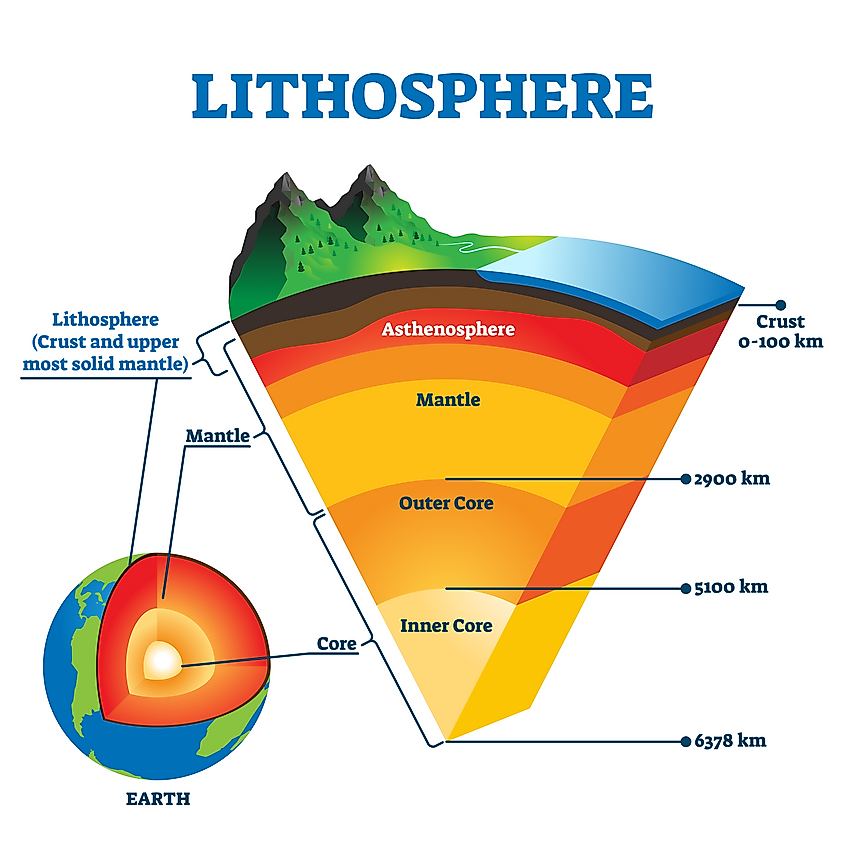

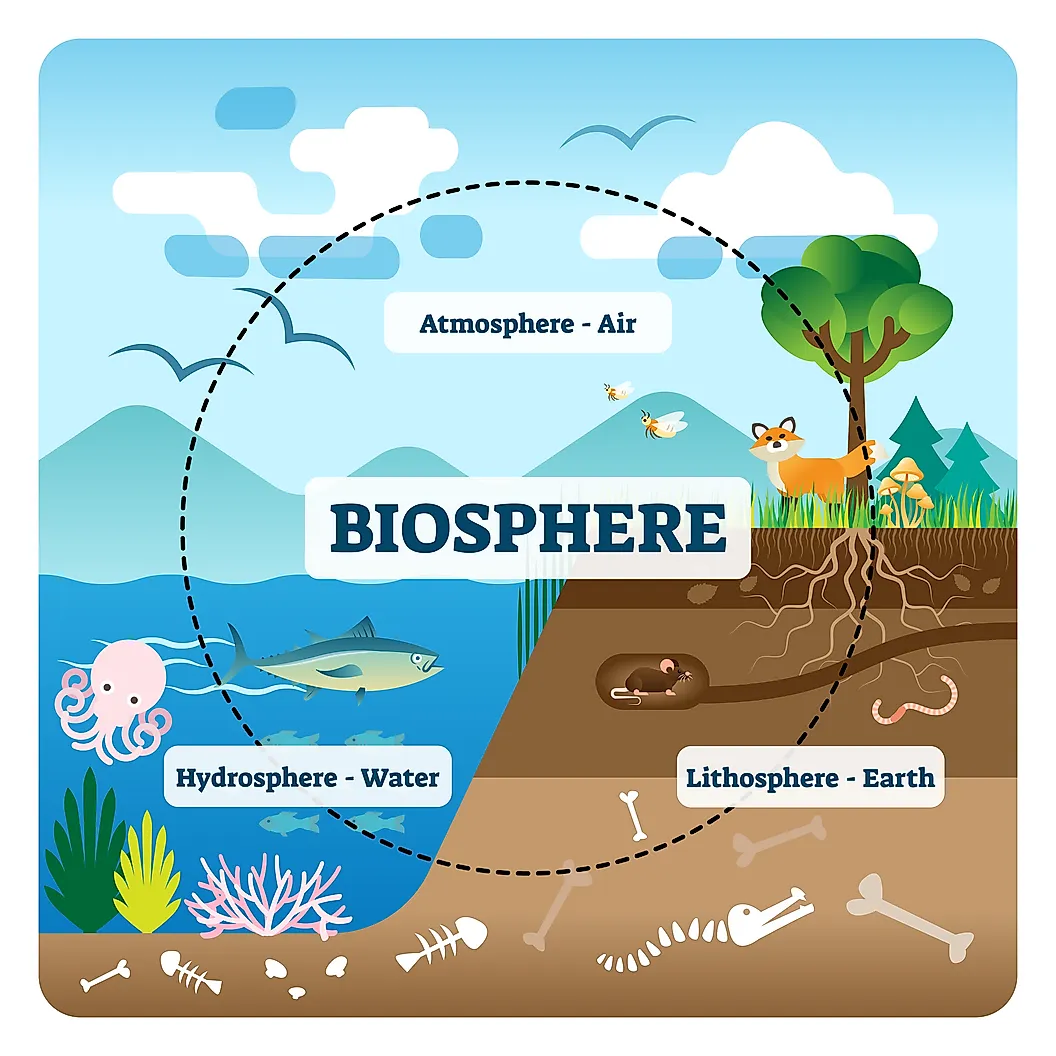








Comments
Post a Comment